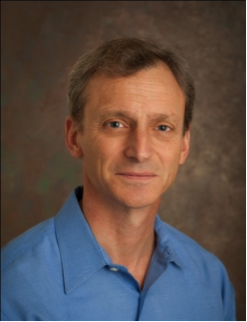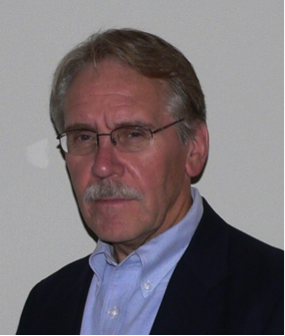Featured Experts
 James Rand has held technology leadership positions in the solar field with both large and small companies for the past 25 years, and is actively involved in the global photovoltaic research community – both academic and industrial. Presently, Dr. Rand consults as an expert in legal and technical matters associated with silicon-based PV. In addition, he is teaching Photovoltaic Materials and Devices at the graduate level at the University of Delaware. Most recently Dr. Rand served as a “Consulting Engineer” at GE Energy, a position similar to chief scientist at other large technology firms. Prior to that, Dr. Rand was Vice President of Research and Development at AstroPower, the first pure-solar public company. He earned the PhD and MS in electrical engineering from the University of Delaware, and a BA with high honors from the University of Virginia. Author of more than 70 publications, he also holds eight patents on all aspects of photovoltaics. He has served as the Industrial Board Chairman of the Silicon Solar Consortium, and is a long-time member of program committees for various international conferences.
James Rand has held technology leadership positions in the solar field with both large and small companies for the past 25 years, and is actively involved in the global photovoltaic research community – both academic and industrial. Presently, Dr. Rand consults as an expert in legal and technical matters associated with silicon-based PV. In addition, he is teaching Photovoltaic Materials and Devices at the graduate level at the University of Delaware. Most recently Dr. Rand served as a “Consulting Engineer” at GE Energy, a position similar to chief scientist at other large technology firms. Prior to that, Dr. Rand was Vice President of Research and Development at AstroPower, the first pure-solar public company. He earned the PhD and MS in electrical engineering from the University of Delaware, and a BA with high honors from the University of Virginia. Author of more than 70 publications, he also holds eight patents on all aspects of photovoltaics. He has served as the Industrial Board Chairman of the Silicon Solar Consortium, and is a long-time member of program committees for various international conferences.
ABSTRACT
Advance into Solar – Primer
James Rand, Founder PV Experts Group; Adjunct Faculty, University of Delaware
Presentation Outline
- Introduction
- PV nomenclature
- Science of Solar Cells
- Breakdown of the Components
- Silicon Module Fabrication Overview
- Test and Evaluation
- Conclusion
- How solar cells work
- Today’s Performance and Tomorrow’s Challenge
- Preparation for the Detailed Sessions ahead in the Program
The presentation will include a high level review of:
 Christopher Cameron’s photovoltaic research concentrating on solar systems has spanned more than 30 years at Sandia National Laboratories, including 14 year as manager of the PV program and manager of Sandia’s National Solar Thermal Test Facility. While his current research focus is PV system performance modeling and model validation, Dr. Cameron has fulfilled two assignments (total of three years) at DOE’s Solar Energy Technology Program in Washington, DC. There he played a key role in moving from $/Wp and efficiency metrics to a broader, more-encompassing “levelized” cost of energy metric and assisted with preparation of Multi-Year Program Plans. He was also one of the primary authors of "Energy Demands on Water Resources,” a DOE Report to Congress on the interdependency of energy and water. Dr. Cameron served as lead analyst for the Technology Pathway Partnerships begun under the Solar America Initiative. Author or co-author of 45 publications, he holds a BS in Physics from Alma College and a PhD in Physics from Duke University.
Christopher Cameron’s photovoltaic research concentrating on solar systems has spanned more than 30 years at Sandia National Laboratories, including 14 year as manager of the PV program and manager of Sandia’s National Solar Thermal Test Facility. While his current research focus is PV system performance modeling and model validation, Dr. Cameron has fulfilled two assignments (total of three years) at DOE’s Solar Energy Technology Program in Washington, DC. There he played a key role in moving from $/Wp and efficiency metrics to a broader, more-encompassing “levelized” cost of energy metric and assisted with preparation of Multi-Year Program Plans. He was also one of the primary authors of "Energy Demands on Water Resources,” a DOE Report to Congress on the interdependency of energy and water. Dr. Cameron served as lead analyst for the Technology Pathway Partnerships begun under the Solar America Initiative. Author or co-author of 45 publications, he holds a BS in Physics from Alma College and a PhD in Physics from Duke University.
ABSTRACT
PV Systems Performance and Reliability
Christopher P. Cameron, Photovoltaics and Grid Integration Department, Sandia National Labs
Presentation Outline
- Introduction
- Performance and Performance Losses in Operating PV Systems
- Overview of PV System Performance Models, Comparison and Validation
- Impacts of Reliability on System Performance and Operating Costs
- Conclusion: Prospects for Improving PV System Performance Modeling
The presentation will include a high level review of :
- PV System Performance – What the kWdc Rating Does Not Tell You
- Where Performance Losses Occur: Mismatch, Shading, Wiring…
- Potential Benefits of Alternative Designs, e.g. Module-Scale Inverters
- Most Widely-Used PV Performance Models: Pvsyst, SAM…
- Model-to-Model and Model-to-Measured Comparisons
- Model Limitations, e.g. due to Spatial and Temporal Averaging
- Most Common Causes of System Failure and Degradation
- Potential Impact of System Design on Reliability/Operating Costs
- Pathways to Improving Model Accuracy and Reduce Uncertainty
- Questions to Consider When Evaluating System Performance
 David E. Carlson began his work in the photovoltaic field in 1970, when he joined the Technical Staff at RCA Laboratories, working in the areas of ion motion in glasses, glow-discharge deposition of thin films and thin-film photovoltaic devices and twice earning the RCA Laboratories Outstanding Achievement Award. The second such award (1976) recognized his 1974 development of amorphous silicon devices and invention of the amorphous silicon solar cell, being the first to demonstrate that hydrogenated amorphous silicon could be doped either p- or n-type and used to form a semiconductor junction. In 1977, Dr. Carlson was appointed Group Head of RCA’s Photovoltaic Device Research. He joined Solarex Corporation in 1983 as Director of Research and Deputy General Manager of the Thin Film Division, promoted to Vice President in 1988, then serving as Vice President and Chief Technologist from 1994 to 1999. Solarex was a wholly owned subsidiary of Amoco, which was acquired by BP in 1999, when Dr. Carlson assumed the role of Chief Scientist of BP Solar, managing its Future Technology Programs and the Intellectual Property System. Recently retired from BP Solar, he continues to serve as an advisor to several organizations involved in photovoltaics.
David E. Carlson began his work in the photovoltaic field in 1970, when he joined the Technical Staff at RCA Laboratories, working in the areas of ion motion in glasses, glow-discharge deposition of thin films and thin-film photovoltaic devices and twice earning the RCA Laboratories Outstanding Achievement Award. The second such award (1976) recognized his 1974 development of amorphous silicon devices and invention of the amorphous silicon solar cell, being the first to demonstrate that hydrogenated amorphous silicon could be doped either p- or n-type and used to form a semiconductor junction. In 1977, Dr. Carlson was appointed Group Head of RCA’s Photovoltaic Device Research. He joined Solarex Corporation in 1983 as Director of Research and Deputy General Manager of the Thin Film Division, promoted to Vice President in 1988, then serving as Vice President and Chief Technologist from 1994 to 1999. Solarex was a wholly owned subsidiary of Amoco, which was acquired by BP in 1999, when Dr. Carlson assumed the role of Chief Scientist of BP Solar, managing its Future Technology Programs and the Intellectual Property System. Recently retired from BP Solar, he continues to serve as an advisor to several organizations involved in photovoltaics.
Dr. Carlson is the recipient of numerous prestigious awards, including the ACS Ross Coffin Purdy Award, IEEE’s Morris N. Liebmann Award and its William R. Cherry Award, the Franklin Institute’s Walton Clark Medal, and the Karl W. Boer Medal from the International Solar Energy Society and the University of Delaware. Member of numerous professional organizations, he is a fellow of the IEEE, has published more than 150 technical papers, holds 26 U.S. patents with 8 patents pending. Dr. Carlson earned a BS in Physics from Rensselaer Polytechnic Institute in 1963 and the PhD in Physics from Rutgers University in 1968, after which he worked as a Research and Development Physicist at the U.S. Army Nuclear Effects Laboratory, Edgewood Arsenal, Maryland until 1969, when he served (1969, 1970) as a U.S. Army Captain at a communications site in Vietnam.
ABSTRACT
Future PV Technologies – What Will Replace Silicon?
David E. Carlson, Chief Scientist, BP Solar (recently retired)
Presentation Outline
- Introduction
- Advanced Si PV Technology
- The Leading Thin Film PV Technologies
- Amorphous Silicon
- Cadmium Telluride
- Copper-Indium-Gallium-Diselenide
- Concentrating Photovoltaics
- Dye-Sensitized Solar Cells
- Organic Solar Cells
- Nanostructured Solar Cells
- Conclusion
The presentation will include a high level review of:
- The performance potential of various PV technologies
- Cost factors that may limit commercialization of some technologies
- Other barriers to commercialization
 Alan Goodrich joined the National Renewable Energy Laboratory (NREL) in 2009 to lead the laboratory’s Solar PV Manufacturing Cost Analysis Group. He brought to that position his nearly ten years in management-consulting, specializing in assisting clients with business development and technology strategy decisions concerning advanced materials and manufacturing technologies. In that role, his primary responsibilities included assisting with R&D portfolio management decisions using financial and cost analyses, as well as gathering and analysis of competitive intelligence. His work to date at the NREL has involved supporting the National Center for Photovoltaics in its R&D resource allocation decisions and road-mapping efforts, as well as strategic investment decisions by the DOE’s Solar Program Office. The scope of the cost model team’s analysis spans the entire value chain, from raw materials to module manufacturing and system installation costs – for all PV technologies. Mr. Goodrich is a graduate of Rensselaer Polytechnic Institute’s School of Decision Sciences and Engineering where he earned a bachelor’s degree in Industrial and Management Engineering. He also holds the MBA from the University of Colorado.
Alan Goodrich joined the National Renewable Energy Laboratory (NREL) in 2009 to lead the laboratory’s Solar PV Manufacturing Cost Analysis Group. He brought to that position his nearly ten years in management-consulting, specializing in assisting clients with business development and technology strategy decisions concerning advanced materials and manufacturing technologies. In that role, his primary responsibilities included assisting with R&D portfolio management decisions using financial and cost analyses, as well as gathering and analysis of competitive intelligence. His work to date at the NREL has involved supporting the National Center for Photovoltaics in its R&D resource allocation decisions and road-mapping efforts, as well as strategic investment decisions by the DOE’s Solar Program Office. The scope of the cost model team’s analysis spans the entire value chain, from raw materials to module manufacturing and system installation costs – for all PV technologies. Mr. Goodrich is a graduate of Rensselaer Polytechnic Institute’s School of Decision Sciences and Engineering where he earned a bachelor’s degree in Industrial and Management Engineering. He also holds the MBA from the University of Colorado.
ABSTRACT
PV Costs - From Mine to Rooftop
Alan C. Goodrich, Senior Analyst, Solar PV Manufacturing Technologies at NREL
Presentation Outline
- Introduction
- PV System Price Metrics: Fair Market Value vs. Bottom-up Analysis
- Bottom-up Installed System Price Analysis: 2010 Benchmark
- Bottom-up 2020 Evolutionary PV System Price Projections vs. Expectations
- Conclusion: PV Price Reductions—the Road Ahead
The Presentation will include a high level review of :
- c-Si and mc-Si costs (including alternative cell designs)
- CIGS costs (coevaporated or sputtered: monolithic on glass)
- CdTe costs (CSS and VPT)
- The Impact of the Expected Price Increase for Tellurium
- U.S. competitiveness: What will take to Succeed?
- Uncertainty Analysis of PV System Prices
- Long Term Module Price Trajectories
- US DOE SunShot Targets for PV
 David L. King is a former Distinguished Member of the Technical Staff at Sandia National Laboratories, having spent over thirty years as a technical team leader in Sandia’s photovoltaic cell, module, and system research departments, resulting in over 100 publications in the solar energy field and hundreds of lab test reports in support of the PV industry. His fields of expertise include performance testing and modeling for cells, modules, arrays, and systems, as well as PV module reliability and failure analysis. He developed and documented a PV array performance model and an inverter performance model that are now used in commercial PV design software as well as in the Department of Energy’s Solar Advisor Model (SAM). He received an M.S.M.E degree from University of New Mexico and a B.S.M.E degree from New Mexico State University. After retiring from Sandia, Mr. King worked for a year as the Director of Module Reliability for Advent Solar, and is currently providing consulting services for several clients in the PV industry, focusing primarily on modeling expected PV system energy production and on field and laboratory testing protocols for performance validation and module reliability assessment.
David L. King is a former Distinguished Member of the Technical Staff at Sandia National Laboratories, having spent over thirty years as a technical team leader in Sandia’s photovoltaic cell, module, and system research departments, resulting in over 100 publications in the solar energy field and hundreds of lab test reports in support of the PV industry. His fields of expertise include performance testing and modeling for cells, modules, arrays, and systems, as well as PV module reliability and failure analysis. He developed and documented a PV array performance model and an inverter performance model that are now used in commercial PV design software as well as in the Department of Energy’s Solar Advisor Model (SAM). He received an M.S.M.E degree from University of New Mexico and a B.S.M.E degree from New Mexico State University. After retiring from Sandia, Mr. King worked for a year as the Director of Module Reliability for Advent Solar, and is currently providing consulting services for several clients in the PV industry, focusing primarily on modeling expected PV system energy production and on field and laboratory testing protocols for performance validation and module reliability assessment.
ABSTRACT
PV Testing: Performance, Certification, Reliability, Monitoring
David L. King, PV Industry Consultant, formerly Distinguished Member of the Technical Staff at Sandia National Laboratories
Presentation Outline:
- Overview of testing methods and standards
- Establishing performance ratings
- Product certification
- Demonstrating reliability and safety
- Monitoring installed system performance
The presentation will include a high level review of:
- Solar irradiance measurements: global, direct, diffuse, spectral, instrument types, ASTM calibration standards.
- Module types: typical flat-plate, bifacial, low-X concentrator, high-X concentrator.
- Module performance: standard test conditions, power rating, energy rating, temperature coefficients, mounting/tracking, IEC test standards.
- Module qualification (certification): accelerated aging tests (thermal cycle, damp heat, humidity/freeze, UV exposure, hail impact, etc.) and safety tests (shock hazard, fire hazard, grounding, impact breakage, etc.), IEC and UL standards.
- Module diagnostics: field failures and new product development testing, light IV, dark IV, thermal imaging, electro-luminescence imaging, destructive analyses.
- System performance: array dc-power rating, inverter efficiency, ac-energy production (specific yield, performance ratio, system efficiency), IEC and ASTM standards
- System reliability: long-term performance monitoring, shading effects, soiling losses, ground faults, maintenance.
 William Mulligan is an internationally known expert in the field of high-efficiency silicon photovoltaic cells and solar systems. Dr. Mulligan has more than 20 years of experience in the photovoltaic field, having served as vice president of research and development for SunPower Corporation from 1998 until his retirement in 2010. Under his leadership, SunPower developed and commercialized the world’s highest efficiency silicon PV cell (22% average in production). Prior to SunPower, he held positions at JX Crystals, the National Renewable Energy Lab (NREL), AstroPower, and Fairchild/National Semiconductor. He currently serves as chairman of SunPower’s technical advisory board and is also a board member at SolarBridge, a micro-inverter company. Mulligan earned a PhD in materials science from the Colorado School of Mines, the MSE in chemical engineering from the University of Michigan, and a BS in chemistry and a BA in history from the University of Washington.
William Mulligan is an internationally known expert in the field of high-efficiency silicon photovoltaic cells and solar systems. Dr. Mulligan has more than 20 years of experience in the photovoltaic field, having served as vice president of research and development for SunPower Corporation from 1998 until his retirement in 2010. Under his leadership, SunPower developed and commercialized the world’s highest efficiency silicon PV cell (22% average in production). Prior to SunPower, he held positions at JX Crystals, the National Renewable Energy Lab (NREL), AstroPower, and Fairchild/National Semiconductor. He currently serves as chairman of SunPower’s technical advisory board and is also a board member at SolarBridge, a micro-inverter company. Mulligan earned a PhD in materials science from the Colorado School of Mines, the MSE in chemical engineering from the University of Michigan, and a BS in chemistry and a BA in history from the University of Washington.
ABSTRACT
The Next Wave of Silicon Technology
William Mulligan, Consultant; Vice President of R&D for SunPower Corporation (retired)
Presentation Outline
- Cost reducing technologies – status and prognosis:
- Poly: upgraded metallurgical grade silicon, fluidized bed
- Ingot: Cast mono, EMC, floatzone, cast wafers
- Wafering: diamond wire, wafer cleaving
- Cells: replacing screen printed silver, texture alternatives
- Modules: new materials and designs
- Review of efficiency loss mechanisms
- High efficiency designs – laboratory progress
- Revolutionary vs. incremental innovation: implementing high efficiency designs in production
The presentation will include a high level review of :
- The most promising technologies for reducing silicon module cost
- The challenges and opportunities to improve module efficiency
 William N. Shafarman is a Scientist at the University of Delaware’s Institute of Energy Conversion, where his research has spanned the past 25 years, focused on thin film solar cells, primarily copper indium gallium diselenide (CIGS) and related alloys. He is also a faculty member in UD’s Department of Materials Science and Engineering, serving as research advisor to many doctoral students working in photovoltaics. Dr. Shafarman led the National CIS R&D Team, part of the National Center for Photovoltaics Thin Film Partnership Program, from 1997-99, and has collaborated extensively with a variety of university, government and industrial research groups. Author of more than 130 technical publications, three book chapters and two patents, he is frequently an invited or plenary speaker at national and international conferences. Dr. Shafarman earned the BS in physics from the University of Delaware, and the MA and PhD in physics from the University of Rochester.
William N. Shafarman is a Scientist at the University of Delaware’s Institute of Energy Conversion, where his research has spanned the past 25 years, focused on thin film solar cells, primarily copper indium gallium diselenide (CIGS) and related alloys. He is also a faculty member in UD’s Department of Materials Science and Engineering, serving as research advisor to many doctoral students working in photovoltaics. Dr. Shafarman led the National CIS R&D Team, part of the National Center for Photovoltaics Thin Film Partnership Program, from 1997-99, and has collaborated extensively with a variety of university, government and industrial research groups. Author of more than 130 technical publications, three book chapters and two patents, he is frequently an invited or plenary speaker at national and international conferences. Dr. Shafarman earned the BS in physics from the University of Delaware, and the MA and PhD in physics from the University of Rochester.
ABSTRACT
The Technology of Thin Film Solar Cells
William Shafarman, Scientist, UD’s Institute of Energy Conversion
Presentation Outline
- Introduction
- Benefits and limitations for thin film materials
- The science of polycrystalline thin film materials and devices
- CIGS materials and processing
- CdTe materials and processing
- How thin film modules are made
- Critical manufacturing issues and challenges
- Future pathways to improved performance and reduce cost






